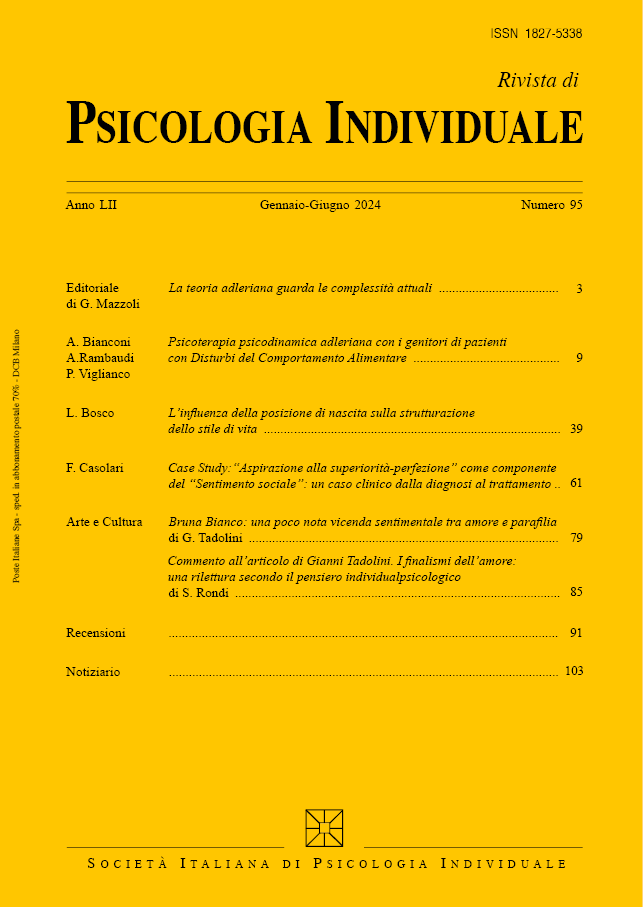Pre-arranged interventions
Keywords:
unconscious, individual psychology, dream, perceptionAbstract
The starting point for this discussion is provided by a thought from Adler (1920): “The compulsion that forces psychic material to remain in the unconscious also exerts pressure on the thoughts, images, and sensory, visual, and auditory impressions of dreams, which, in order not to attack the unity of the personality, must also remain in the unconscious, or rather, must remain unintelligible.”
On the one hand, this sentence explains what is currently held in Individual Psychology, namely that “even dreams are subject to the laws of tendentious apperception,” where this term refers to "a perceptual law of man according to which he eliminates from perception, or renders bloodless, everything that does not correspond to his tendency and perceives in a one-sided manner everything that corresponds to this tendency" (Schmidt, 1980); on the other hand, it indicates exactly the opposite, namely that an alternative meaning of experiences persists more or less consciously in the individual, which may also conflict with the predominant tendencies of his lifestyle.
In dreams and in the unconscious, we therefore find both the dreamer's self-deception and the healthy corrective to the sclerotic tendencies of consciousness; we can also say that in dreams and in the unconscious, we can assume that both the conflict and the attempt to resolve it and harmonize it with the lifestyle, to integrate it into the self-image, take place






